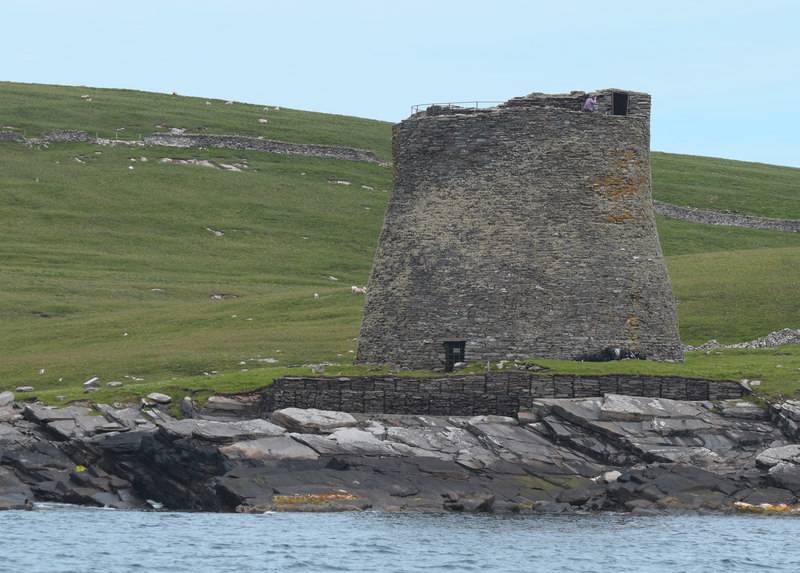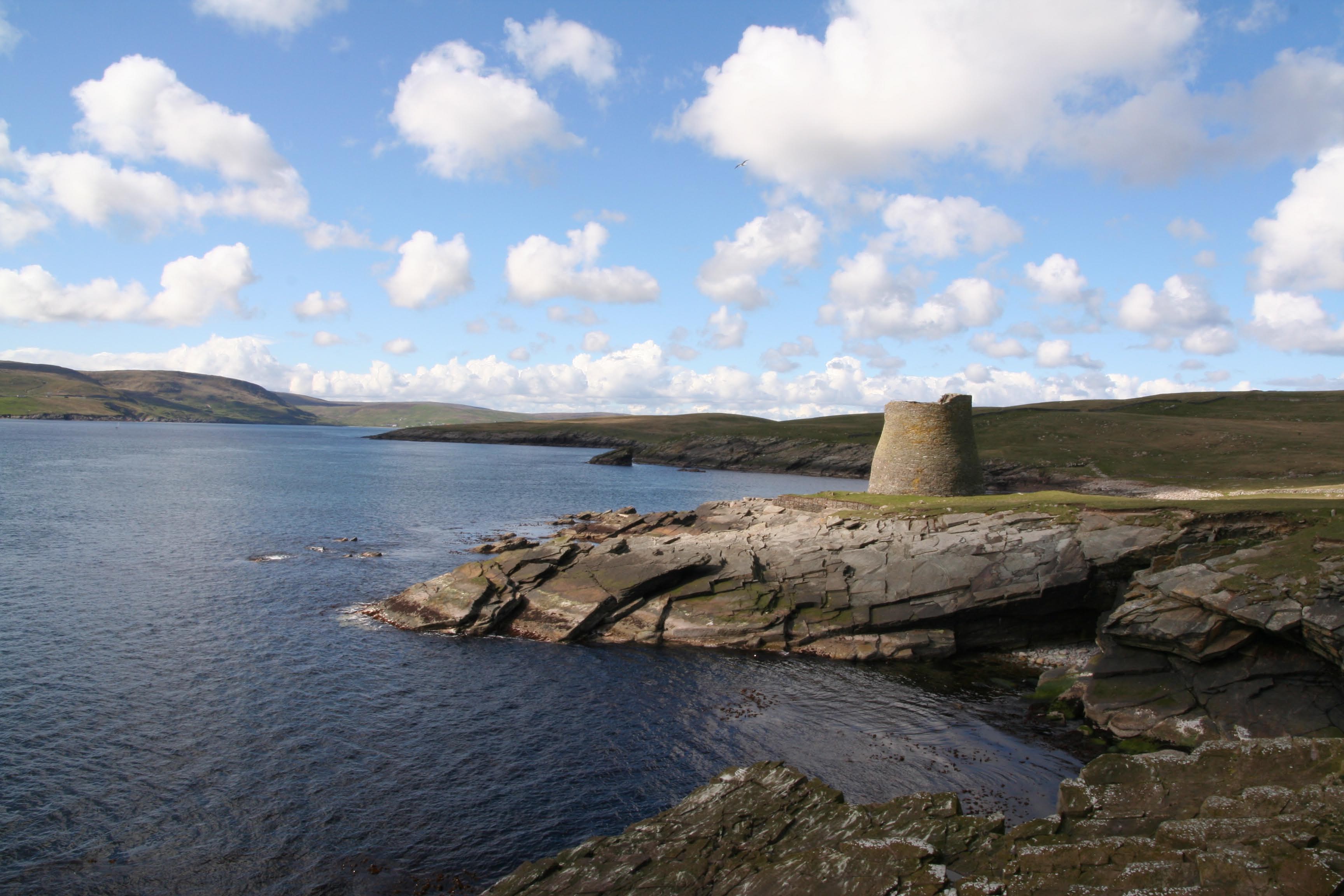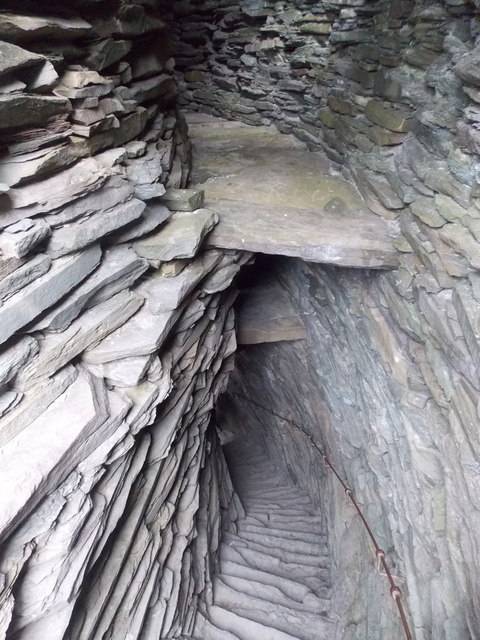The Broch of Mousa is a remarkably well-preserved Iron Age structure located on the island of Mousa in Shetland, Scotland. Standing at about 13 meters tall, it is the finest example of a broch – a drystone hollow-walled structure found only in Scotland. The Broch of Mousa’s significance lies not only in its excellent state of preservation but also in its historical importance as a window into the Iron Age period. It has fascinated archaeologists and historians for years, offering insights into the lives of the people who built and used these structures.
Get your dose of History via Email
Historical Background of Broch of Mousa
The Broch of Mousa was discovered in the modern era, but its origins trace back to the Iron Age, around 300 BC. It is believed to have been built by the Picts, a group of Late Iron Age and Early Medieval Celtic people living in ancient Scotland. The broch’s discovery was not documented as a singular event, as it has been a visible landmark for centuries. However, its archaeological significance came to light in the 19th century.
Throughout history, the Broch of Mousa may have served various purposes, including defense, status symbol, or domestic residence. It is unique in that it has never been significantly reconstructed, offering an authentic view of its original form. The broch has also been mentioned in Norse sagas, indicating that it was inhabited or used during the Viking Age.

One historical event of note is the broch’s use as a refuge in 1153 AD. According to the Orkneyinga Saga, a Viking chieftain named Erlend Ungi used the broch to shelter his love, Margaret, the mother of Earl Harold. This romantic interlude adds a layer of human history to the cold stones of the broch.
The Broch of Mousa’s builders are not known by name, but they were part of a broader broch-building culture that spread across Scotland. These structures are unique to the region and showcase a sophisticated understanding of stonework and architecture without the use of mortar.
Over the centuries, the broch has stood the test of time, withstanding the harsh Shetland weather and the passage of eras. It remains a testament to the ingenuity and resilience of its creators and continues to be a site of historical importance and interest.
About Broch of Mousa
The Broch of Mousa is an impressive example of Iron Age architecture. It stands at roughly 13 meters high and 15 meters in diameter, with walls that are up to 5 meters thick. The structure is made entirely of local stone, laid without the use of mortar, showcasing the skill of its builders.
Inside the broch, a visitor finds a central living space with a hearth and evidence of stone furniture. The walls contain a series of galleries and chambers, which may have been used for storage or as additional living spaces. The entrance passage is low and narrow, a defensive feature common in brochs.
The broch’s most striking architectural feature is its double-skinned wall. This design includes two concentric circles of stone with a space in between, which strengthens the structure and provides insulation. The inner and outer walls are tied together by stone slabs, creating a series of galleries.

At the top of the broch, a scarcement ledge suggests the presence of an upper wooden floor or gallery, which would have increased the living space. The exact layout of the upper levels is a matter of some speculation, as only the stone base remains.
The craftsmanship of the Broch of Mousa is a testament to the advanced building techniques of the time. The precision with which the stones are laid, without mortar, to create a stable and enduring structure, is a marvel of ancient engineering.
Theories and Interpretations
There are various theories about the purpose of the Broch of Mousa. Some suggest it was a defensive stronghold, while others believe it was a prestigious dwelling or a status symbol. Its location on an island could indicate a strategic choice for defense or trade.
The mystery of the broch’s exact function is compounded by its remarkable preservation. Unlike other brochs that have been excavated and restored, the Broch of Mousa’s untouched nature leaves more to the imagination. Archaeologists must rely on comparisons with other sites to form their interpretations.
Some theories propose that the broch played a role in the social structure of the community, possibly as a gathering place for chieftains or as a community center. The presence of Norse artifacts suggests that it was reused during the Viking Age, possibly as a lookout or defensive refuge.

Carbon dating and other archaeological methods have been used to estimate the age of the broch. These techniques, along with historical records, help to create a timeline for its construction and use. However, the exact dates remain subject to debate.
The Broch of Mousa continues to be a subject of study and fascination. Its silent walls hold many secrets, and each theory adds to the rich tapestry of its history. As research continues, new interpretations may emerge, shedding further light on this enigmatic structure.

At a glance
Country: Scotland
Civilization: Pictish
Age: Approximately 2300 years old (300 BC)
Conclusion and Sources
Reputable sources used in the creation of this article include:
- Wikipedia: https://en.wikipedia.org/wiki/Broch_of_Mousa
- Historic Environment Scotland: https://www.historicenvironment.scot/visit-a-place/places/mousa-broch/
